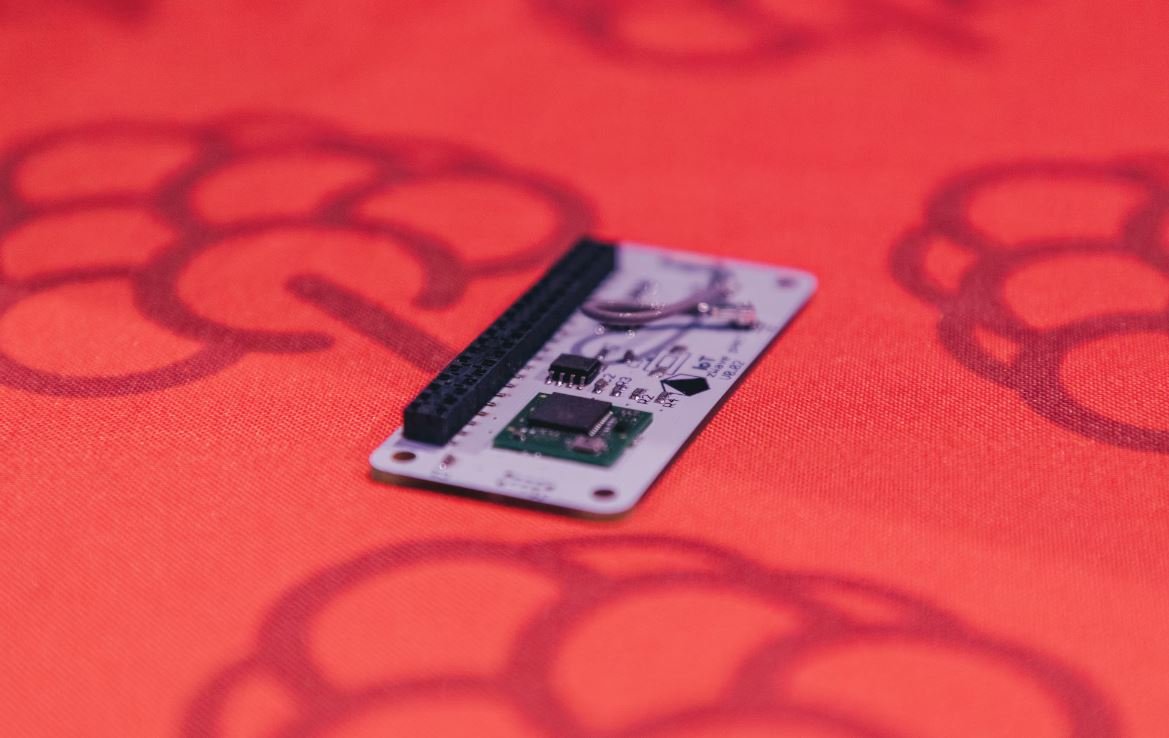Why Track Basal Body Temperature
Tracking your basal body temperature (BBT) can provide valuable insights into your menstrual cycle and overall health. By recording your BBT every morning, you can detect important patterns and changes that can help you achieve various fertility goals or identify potential health concerns. This article explains why tracking basal body temperature is beneficial and how it can empower individuals to make informed decisions about their reproductive health.
Key Takeaways
- Basal body temperature (BBT) tracking can provide insights into your menstrual cycle and overall health.
- Tracking BBT can help determine the fertile window and improve chances of conception.
- Changes in BBT can indicate potential health concerns and can be shared with healthcare providers for evaluation.
- BBT tracking allows individuals to understand their unique hormonal patterns and make informed decisions about reproductive health.
**Basal body temperature** refers to the body’s lowest resting temperature, usually measured in the morning after at least 3 hours of uninterrupted sleep. Throughout the menstrual cycle, hormones such as **estrogen and progesterone** cause slight variations in BBT, which can be tracked using a special thermometer.
*Having a consistent wake-up time each morning can help maintain accurate BBT tracking.*
Benefits of Tracking Basal Body Temperature
Tracking BBT can be particularly useful for:
- Determining the fertile window: By tracking BBT over several months, individuals can identify their unique menstrual patterns and determine the days when they are most likely to conceive. This information can be helpful for those trying to get pregnant or, conversely, trying to avoid pregnancy.
- Confirming ovulation: A significant temperature rise (usually around 0.5-1.0°F/0.3-0.6°C) indicates that ovulation has occurred, providing confirmation and increasing the chances of successful conception.
- Identifying hormonal imbalances: Fluctuations or irregularities in BBT can indicate potential hormonal imbalances, such as **thyroid disorders** or **polycystic ovary syndrome (PCOS)**. Early detection of these issues can lead to timely medical intervention.
- Monitoring overall health: BBT tracking can serve as a general health indicator. A consistently low or high BBT may suggest an underlying health condition that requires evaluation by a healthcare professional.
Tracking Basal Body Temperature: How To
To track your BBT effectively, follow these steps:
- Use a basal body thermometer: These thermometers are designed to measure subtle changes in temperature and often provide accurate readings to the decimal point. Using a regular thermometer may not yield precise results.
- Measure at the same time each morning: For accurate comparisons, measure your BBT at the same time every morning before engaging in any physical activity or even sitting up in bed.
- Record your temperature: Use a dedicated chart or a fertility tracking app to record your daily BBT readings. This will help you visualize patterns and identify ovulation.
- Track other fertility signs: In combination with BBT, monitor other fertility signs, such as cervical mucus consistency and changes in cervical position, to enhance overall fertility awareness.
- Share the data with your healthcare provider: If you notice irregularities or have concerns about your BBT chart, share it with your healthcare provider. They can provide professional evaluation and guidance.
Data Analysis: Interesting Findings
Multiple studies have highlighted interesting findings related to BBT tracking:
| Study | Findings |
|---|---|
| Study 1 | Women with a consistently lower BBT throughout their cycle had a higher risk of hypothyroidism. |
| Study 2 | There was a positive correlation between the length of the luteal phase (time between ovulation and menstruation) and the likelihood of successful conception. |
| Study 3 | Women with PCOS often exhibited irregular BBT patterns, making it a useful tool in diagnosing the condition. |
Conclusion
Tracking basal body temperature is a simple yet powerful method for understanding your menstrual cycle and overall reproductive health. By recording and analyzing your BBT over time, you can improve your chances of conception, identify potential health concerns, and gain valuable insights into your unique hormonal patterns. Start tracking your BBT today and unlock the empowering knowledge it provides!

Common Misconceptions
1. Basal Body Temperature is Only for Tracking Ovulation
One common misconception about tracking basal body temperature (BBT) is that its sole purpose is to help women track their ovulation. While BBT is indeed a useful tool for determining the most fertile days in a woman’s menstrual cycle, it can also provide valuable insights into other aspects of reproductive health.
- BBT can help identify underlying health issues such as thyroid disorders or hormonal imbalances
- Tracking BBT can be helpful for couples trying to conceive, but it can also be used for natural family planning
- Changes in BBT patterns can indicate pregnancy or the onset of menopause
2. BBT Should Be Taken at the Same Time Every Day
Another misconception is that BBT should be taken at the exact same time every day for accurate results. While consistency in timing can help improve accuracy, it is not always possible or necessary to take BBT at the exact same time every day.
- Experts suggest taking BBT as soon as you wake up, but it is more important to take it after at least 3-4 hours of uninterrupted sleep
- Temperature readings taken within a 30-minute window of the usual time can still provide useful information
- Having a designated BBT thermometer by the bedside can help streamline the process and make it easier to monitor regularly
3. BBT Can Accurately Predict Ovulation
While BBT tracking can give you clues about your ovulation cycle, it cannot definitively predict the exact day of ovulation. This is because BBT rises after ovulation has already occurred, making it more useful for identifying the fertile window rather than predicting ovulation itself.
- Combining BBT tracking with other fertility signs like cervical mucus and ovulation predictor kits can provide a more accurate prediction of ovulation
- Some women may experience unpredictable fluctuations in their BBT, making it challenging to rely solely on this method for predicting ovulation
- It’s important to understand that BBT alone may not be sufficient in cases of irregular cycles or fertility issues, and medical consultation may be necessary
4. BBT Tracking Is Only for Women
BBT tracking is often associated with women, but it is not limited to them. Men can also benefit from tracking their basal temperature to gain insights into their reproductive health.
- BBT tracking can help men identify potential hormonal imbalances or issues with sperm production
- For couples trying to conceive, tracking both partners’ BBT can provide a more comprehensive view of their fertility health
- Menstruating individuals can also involve their male partners in the BBT tracking process to enhance their understanding of the reproductive cycle
5. BBT Tracking Is Complicated and Inconvenient
Some people may believe that tracking basal body temperature is a complex and inconvenient process. However, with advancements in technology and the availability of user-friendly smartphone apps, BBT tracking has become more accessible and user-friendly than ever before.
- Several smartphone apps can help track BBT, making it easier to record and interpret temperature readings
- BBT thermometers are now available with features like memory recall and temperature charting to simplify the process
- Once you establish a routine, BBT tracking becomes a simple and quick morning ritual

Why Track Basal Body Temperature
Tracking basal body temperature is a useful tool for women who are trying to conceive or monitor their reproductive health. Basal body temperature is the lowest body temperature reached during rest, usually measured in the morning before any physical activity. By tracking changes in body temperature over time, women can gain insights into their menstrual cycle, ovulation, and hormonal patterns. This article explores ten interesting points and data about why tracking basal body temperature can be beneficial.
Understanding the Menstrual Cycle
Table illustrating the phases of the menstrual cycle: follicular, ovulation, and luteal phase, along with corresponding basal body temperature ranges and hormone levels.
Correlation between Basal Body Temperature and Ovulation
Table showing the relationship between basal body temperature and ovulation, illustrating the temperature drop just before ovulation and the subsequent rise afterwards.
Identifying Ovulation Patterns
Table comparing the length of menstrual cycles, duration of follicular and luteal phases, and basal body temperature fluctuations in women with regular and irregular ovulation patterns.
Effectiveness of Natural Family Planning
Table presenting the effectiveness rates of natural family planning methods, including tracking basal body temperature, for preventing pregnancy when used correctly.
Detecting Early Pregnancy
Table showing the average basal body temperature during early pregnancy compared to the average temperature during a regular menstrual cycle, highlighting the slight increase in body temperature that may indicate pregnancy.
Identifying Hormonal Imbalances
Table demonstrating the correlation between irregular basal body temperature patterns and hormonal imbalances, such as low progesterone levels or thyroid dysfunction.
Predicting Menstruation and PMS Symptoms
Table showcasing the connection between the decreasing basal body temperature just prior to menstruation and the occurrence of premenstrual syndrome (PMS) symptoms in some women.
Assessing Thyroid Function
Table displaying the impact of thyroid disorders on basal body temperature, including hypothyroidism leading to lower temperatures and hyperthyroidism causing elevated temperatures.
Tracking Personal Fertility Patterns
Table illustrating individual patterns in basal body temperature and their correlation with fertility, showcasing how tracking can help women understand their unique menstrual and fertility patterns.
Guiding Fertility Treatment
Table presenting data on the effectiveness of tracking basal body temperature in guiding fertility treatments, including assisted reproductive technologies and timing of insemination or embryo transfer.
By tracking basal body temperature, women can gain valuable insights into their reproductive health, including ovulation patterns, hormonal balance, and potential pregnancy. This data can empower women to make informed decisions about fertility, contraception, and overall well-being. Whether trying to conceive or simply interested in understanding their bodies better, tracking basal body temperature proves to be an invaluable tool.
Frequently Asked Questions
Why should I track my basal body temperature (BBT)?
Tracking your basal body temperature can help you identify your fertile days, understand your menstrual cycle, and detect any possible fertility issues.
What is basal body temperature (BBT)?
Basal body temperature refers to your body temperature at rest, typically measured in the morning before any physical activity.
How do I measure my basal body temperature?
To measure your basal body temperature, use a special basal thermometer and take your temperature orally, vaginally, or rectally every morning before getting out of bed.
When is the best time to measure my basal body temperature?
The best time to measure your basal body temperature is in the morning, right after waking up and before engaging in any activity.
Why is morning the ideal time to measure basal body temperature?
Measuring your basal body temperature in the morning provides consistent and accurate readings as it reflects your lowest body temperature during sleep.
How can tracking basal body temperature help with fertility?
By tracking your basal body temperature, you can identify the pattern of temperature fluctuations in your cycle, helping you determine your most fertile days and timing intercourse accordingly.
What can abnormal basal body temperature patterns indicate?
Abnormal basal body temperature patterns, such as consistently high or low temperatures, can indicate hormonal imbalances or potential fertility issues that may require medical attention.
Are there any factors that can affect basal body temperature other than fertility?
Yes, factors such as illness, stress, lack of sleep, alcohol consumption, and certain medications can temporarily affect your basal body temperature readings, so it’s important to consider these variables when interpreting the data.
Are there any tools or apps available to track basal body temperature?
Yes, there are various mobile apps and online tools specifically designed to help you track and chart your basal body temperature. These tools often make it easier to detect trends and identify ovulation periods.
How long should I track my basal body temperature to get accurate results?
It is recommended to track your basal body temperature for several cycles to establish a clear pattern and identify trends in temperature fluctuations. Most experts suggest tracking for at least three to six months.




